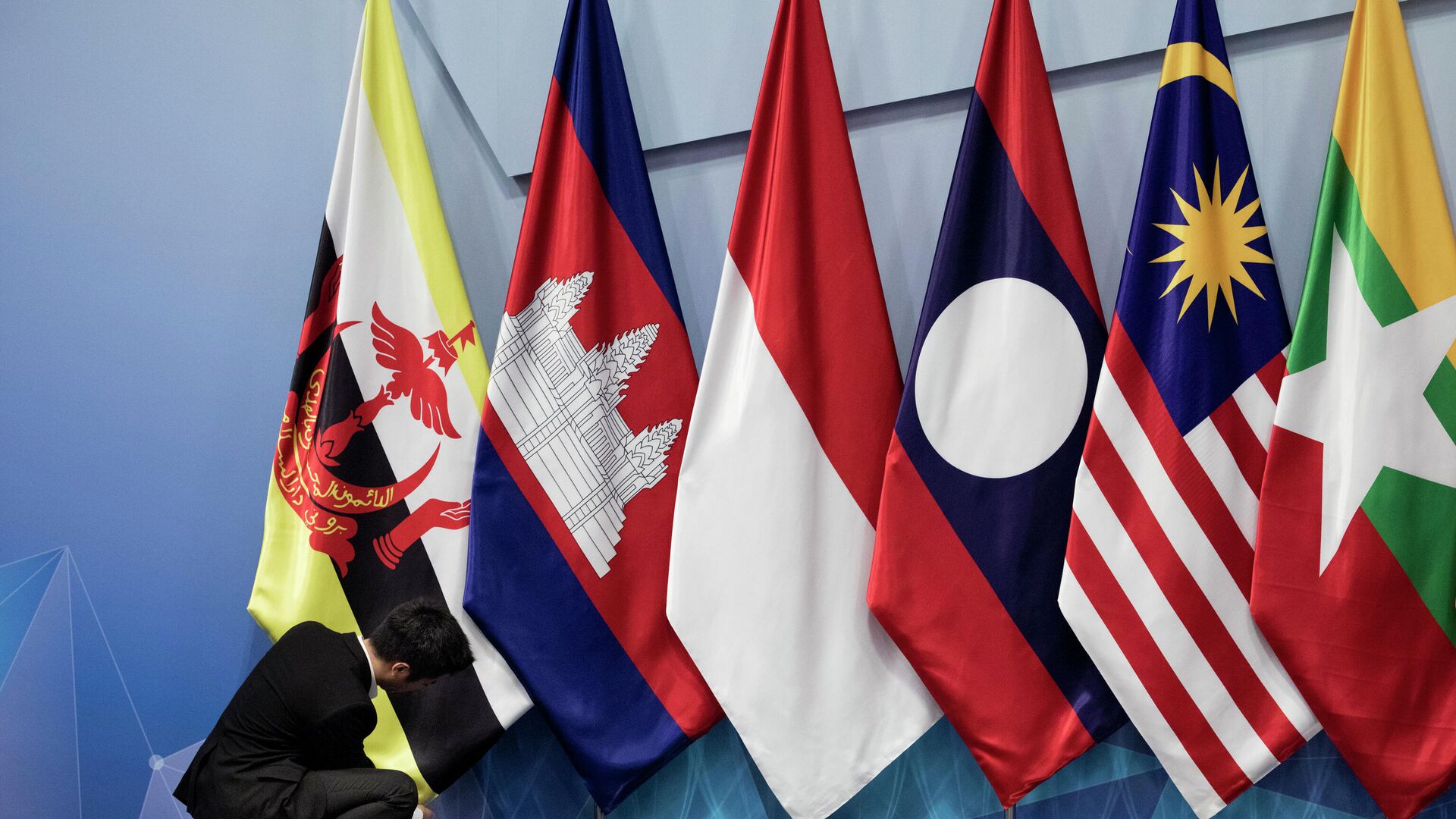China Seeks Upgrade of ASEAN Relationship to Comprehensive Strategic Partnership at November Summit
01:07 GMT 28.10.2021 (Updated: 16:24 GMT 05.03.2023)

© AP Photo / Bernat Armangue
Subscribe
After 30 years of dialogue with the Association of Southeast Asian Nations (ASEAN), China is reportedly seeking to upgrade that relationship as its ties to the region deepen. It also comes as the United States tries to boost its own ties in Southeast Asia and wrest the area from Chinese influence.
The pitch, made on the sidelines of the ASEAN virtual summit by Chinese Premier Li Keqiang, was revealed by Singaporean Prime Minister Lee Hsien Loong during his official remarks in which he expressed in-principle support for China upgrading its relationship with the bloc to a “comprehensive strategic partnership,” according to Straits-Times.
The meeting would reportedly take place next month and be attended by Chinese President Xi Jinping, and Malaysian Prime Minister Ismail Sabri Yaakob has also expressed support for the idea, according to the South China Morning Post.
However, not all were immediately ready. Thailand has taken a more cautious approach, with government spokesman Thanakorn Wangboonkongchana telling Bloomberg the country wants the South China Sea Code of Conduct to be in place to guarantee “effective, substantive and in accordance with international law” before formally deepening relations with Beijing.
The document, long in the negotiating phase, hit an important milestone in August when another section of the document was agreed upon. The code of conduct would lay out a framework for settling nautical disputes in the South China Sea, where China, Taiwan, and several ASEAN members have overlapping claims on islands and the sea lanes surrounding them. These lead to regular confrontations involving fishing fleets, petroleum exploration vessels, and warships conducting maritime maneuvers.
Pressure to make progress on the code of conduct increased earlier this year amid a weeks-long showdown over Whitsun Reef, a small island in the Spratly chain claimed by the Philippines and China where a Chinese fishing fleet anchored, claiming to be seeking shelter from stormy weather.
China has grown closer to ASEAN’s 10 member states since it was admitted as an observer in 1991, becoming its largest trading partner last year, Lee said in his remarks. That trend will only continue as China’s Belt and Road Initiative infrastructure megaproject continues to expand. The highly anticipated opening of a new high-speed rail line connecting Kunming, the capital of China’s southern Yunnan Province with Vientiane, capital of the mountainous landlocked country of Laos, 1,013 kilometers away, is the latest such example.
Li noted in his remarks to the bloc’s leaders that the Regional Comprehensive Economic Partnership (RCEP), the world’s largest free trade bloc, would soon enter force after a sixth nation, ASEAN chair Brunei, ratified it earlier this month.
The deal can enter force once 15 countries ratify it; so far Thailand, Singapore, China, Japan, Cambodia, and Brunei have done so, meaning it needs three more from ASEAN and one other before it can take effect. Last month, Chinese Foreign Minister Wang Yi made a tour of the region urging RCEP’s ratification, focusing especially on Vietnam, which is being courted especially strongly by the United States.
Li also noted China has officially applied to join the Comprehensive and Progressive Agreement for Trans-Pacific Partnership (CPTPP), a trade pact initiated by the United States as the TPP, but revived by its other partners after then-US President Donald Trump pulled out three days after taking office on January 23, 2017.
US President Joe Biden also spoke at the ASEAN summit, as the US is an observer like China; Russia is the third observer, together forming ASEAN Plus Three (APT). His predecessor, Donald Trump, snubbed the summit, only attending in person during his first year in office in 2017.
Seeking to expand Washington’s relationship with the bloc, Biden pledged $102 million toward new anti-pandemic initiatives with ASEAN and touted a previous $200 million committed to the region, according to a White House readout.
Several high-ranking US officials have toured Southeast Asia in recent months, including Defense Secretary Lloyd Austin, Vice President Kamala Harris, and Deputy Secretary of State Wendy Sherman, each of whom pledged new military and political cooperation. While they framed their efforts as aimed at protecting the nations in question from Chinese aggression, Vietnamese Prime Minister Phạm Minh Chính made clear to both countries that the country “does not ally with one country to fight against another.”



